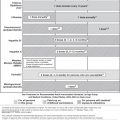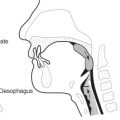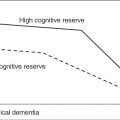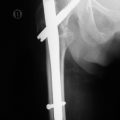Community-Acquired Pneumonia
Many studies of community-acquired pneumonia (CAP) in the elderly have focused primarily on hospitalized cases. Marston et al.1 evaluated all adults hospitalized for CAP in 1991 who resided in two counties of the State of Ohio in the USA. The incidence of CAP requiring hospitalization was 266.8 per 100 000 with an overall case-fatality rate of 8.8%. The incidence was higher in males and increased with age. Case-fatality was significantly higher in those ≥65 years of age (12.5%) compared with those aged <65 years (4.6%; p < 0.001). Kaplan et al.2 performed a retrospective analysis of Medicare administrative data for 1997 and found that the overall incidence of CAP was 18.3 per 1000 population but increased from 8.4 per 1000 in those aged 65–69 years to 48.5 per 1000 in those aged 90 years and older, and the incidence was higher in males. Overall hospital mortality was 10.6% but mortality doubled with age from 7.8% in those 65–69 years to 15.4% in those 90 years and older.
Fry et al.,3 using data from the National Hospital Discharge Survey in the USA, compared hospitalization rates for CAP among those aged 65 years and older between 1988 and 2002 and found that the rates increased by 20% for those aged 65–74 years and 75–84 years but not for those aged 85 years and older. However, rates of hospitalization were significantly higher in those aged 85 years and older compared with those aged 75–84 years. In a separate analysis of the National Hospital Discharge Survey from 1998 to 2003 there was an overall significant decrease in the rate of hospital discharges for invasive (meningitis and bacteraemia) pneumococcal disease; much of this invasive disease was likely related to pneumonia and most of the decrease was due to a decrease in discharge rates in those aged 65 years and older.4 The overall decline in hospital discharge rate for invasive pneumococcal disease coincided with the introduction of the conjugated pneumococcal vaccine for children in 2000. The decline in incidence of invasive pneumococcal disease in those aged 65 years and older was also documented by the Active Bacterial Core Surveillance Program of the Centers for Disease Control and Prevention.5
Jackson et al.6 provided the first extensive evaluation of rates of CAP in the elderly managed in the community and in the hospital. They evaluated 46 237 people age 65 years and older who were members of a health maintenance organization in one state in the USA between 1998 and 2001. Rates of CAP ranged from 18.2 episodes per 1000 person years for those aged 65–69 years to 59.9 per 1000 for those aged 90 years and older (overall rate 28.4 per 1000 person years). In all age categories, males had a higher rate of pneumonia episodes. In this population, 59% of all episodes of CAP were treated on an outpatient basis. Independent risk factors for CAP included older age, male gender, obstructive lung disease, asthma, diabetes, heart failure and smoking. Among persons hospitalized for treatment, 12.5% died within 30 days of admission whereas only 0.4% of persons treated as outpatients died within 30 days of initial diagnosis. O’Meara et al.7 evaluated the rate of hospitalization for CAP in community-dwelling people aged 65 years and older enrolled in the Cardiovascular Health Study who were followed for a median of 10.7 years. Of 5888 enrollees, approximately 10% were hospitalized with CAP with a hospital mortality of 10%. Among those who survived the CAP episode, the risk of death in subsequent years was significantly higher compared with those with no CAP episodes. Significant predictors of hospitalization for CAP were age, male gender, smoking, history of cardiovascular disease, peripheral vascular disease, diabetes, chronic lung disease and race other than African-American. In a case–control study of community elderly patients enrolled in a health maintenance organization in one state in the USA, risk factors for CAP included presence and severity of cardiopulmonary disease, low weight or recent weight loss and poor functional status; 42% of CAP cases were said to be attributable to cardiopulmonary disease.8
Nursing Home-Acquired Pneumonia
In the nursing home setting, the reported incidence of pneumonia has ranged from 0.5 to 3.3 episodes per 1000 resident days in mostly retrospective studies.9 The variation in the reported rate of nursing home-associated pneumonia (NHAP) may be related to differences in incidence over time, study design, number of facilities studied, completeness of case finding and facility affiliation (federal, community, proprietary, non-proprietary). Intensive prospective studies of NHAP found the incidence to be 0.7 to 1.0 episodes per resident care days.9
Multiple studies have identified risk factors for the development of nursing home-acquired pneumonia.9 These factors include tracheostomy, dementia, dysphagia, tube feeding, depression, change in mental status, malnutrition/weight loss, poor functional status, chronic lung disease, smoking, no vaccinations, poor oral care, sedatives, cardiovascular disease, neurological disease, older age and male gender. The different risk factors that have been identified relate to variations in the definition of pneumonia/case finding, number of episodes studied, number of facilities studied and limitations in data collection/availability of data.
Risk factors for mortality among those with NHAP have been studied extensively. Comparison of the findings of these studies is problematic because some investigators combined pneumonia and bronchitis into a single group for analysis versus studies that focused on pneumonia. In addition, crude mortality varied depending on the site of treatment: 8.8–28% for those treated in a nursing home compared with 17.6–53% for those treated in hospital.9 With these limitations in mind, the following factors were found to be significantly predictive of mortality: poor functional status, observed/history of aspiration, dementia, respiratory rate >30 breaths per minute, pulse >125 beats per minute, acute change in mental status and acute severity of pneumonia.9 There is also evidence that there may be significant variations in mortality among facilities. Nicolle et al.10 found significant variations in 21-day mortality in residents of 21 long-term care facilities in Canada prospectively identified with lower respiratory tract infection. This study utilized three different definitions of lower respiratory infection because of variations in diagnostic testing and reporting of clinical data among study facilities. Among the residents with chest radiographs demonstrating pneumonia, factors significantly associated with mortality were change in mental status from baseline, history of stroke, respiratory rate ≥25 breaths per minute, staffing level and number of hours dedicated to infection control efforts. This is the first study to identify facility-level factors that may be contributing to the outcome of NHAP.
Stay updated, free articles. Join our Telegram channel

Full access? Get Clinical Tree







